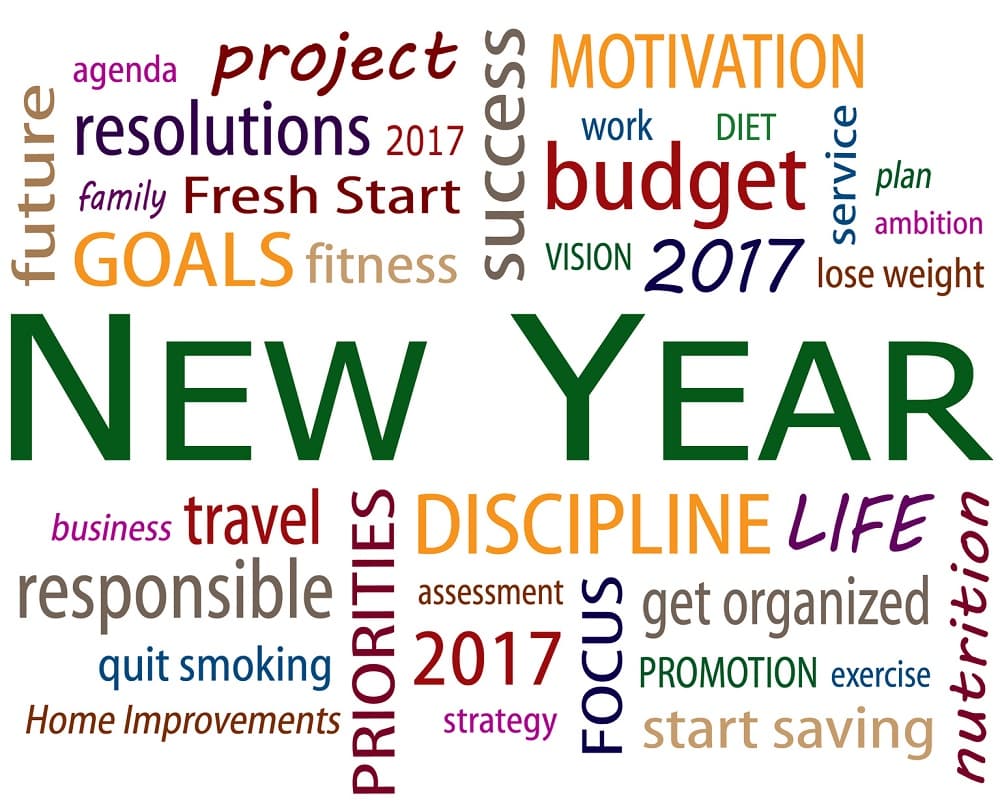4 Tips for Setting Up a Healthier 2017
New Year's resolutions, how many of us year after year plan on doing something to better our lifestyle and have been unsuccessful? Well, 2017 can be different if you approach that resolution with a goal that you can accomplish. So how about setting a realistic, measurable goal?
Did you know that 45% of Americans make New Year's resolutions and about 8% of that 45% are successful?[1] Did you also know that losing weight and getting healthy is the most common New Year's resolution? Your physical therapists at SetPT want to help you accomplish that goal. Here are some tips for setting fitness goals.
1. Create a Plan
Before you start your exercise program, answer three questions. First, when will you exercise? Identify three days and times that are convenient for you and stick with those days so you are working out at the same time each week. Second, what type of exercise will you do? The best type of exercise is one you enjoy. Don't worry about what everyone else is doing; pick an exercise that works for you. Choose from activities such as walking, cycling, running, swimming, weightlifting, skating, dancing, golf, handball, tennis and basketball. Third, how much time will you spend exercising? Start with as little as 10 minutes per session and slowly build up to at least 30 minutes per workout. . An easy way to make sure you're moving often is a fitness tracker. There are many on the market now that will count your steps and even remind you to get up and move if you've been stationary for too long.
2. Be Realistic
One of the biggest problems with New Year's resolutions is they can be extremely impractical. Setting goals is a great idea, but make sure they are realistic and feasible. For example, a goal to lose 12 lbs by Easter is both reasonable and achievable. So is a goal to complete a 5K run by tax day. Conversely, a goal to complete a marathon by that date is unrealistic and potentially unsafe for newbie runners. Think of it as if you were building a house. Start slow (i.e., low intensity and duration), develop a solid foundation of fitness and then build upon that foundation as your fitness improves.
As well as making goals realistic making them measurable and meaningful can also be extremely helpful.. Is one of your goals to run more? Objective goals like distance, time, repetition, or weight are achievable and measurable. For example, setting a goal of being able to run 4 miles in 40 minutes by February 10th is measurable and achievable.
3. Don't Beat Yourself Up
Perfection is unattainable. Remember that minor missteps when reaching your goals are completely normal and OK. Every moment is a new moment and every day is a new day. Don't give up completely because you ate a brownie and broke your diet, or skipped the gym for a week because you were busy. Everyone has ups and downs; resolve to recover from your setbacks and get back on track.
Another positive strategy is to reward yourself when you achieve your goal. It doesn't have to be food but could be going to a special event or spa treatment, something to nourish your soul. This will motivate you to make new, more challenging goals for the next month.
4. Seek Out Some Support
You may know someone who resolved to start exercising in the New Year. Begin your fitness journey together. It will increase your chances for success and you'll have more fun. Ask your friends or family if they would like to make goals with you. It is often easier to make goals with a group of people who will encourage you and keep your motivated. Working out with a trainer is another great way to maintain an exercise schedule.
With wellness and exercise programs continuing to be in high demand, physical therapists are ideally suited to help people of all ages and fitness levels reach their wellness goals. Physical Therapists are the medical community's leading experts in helping people improve the way their bodies work, feel and move. At SetPT we want to help make sure in 2017 you're setup for success.
Written by Chris Estafanous and Ashley Baker





